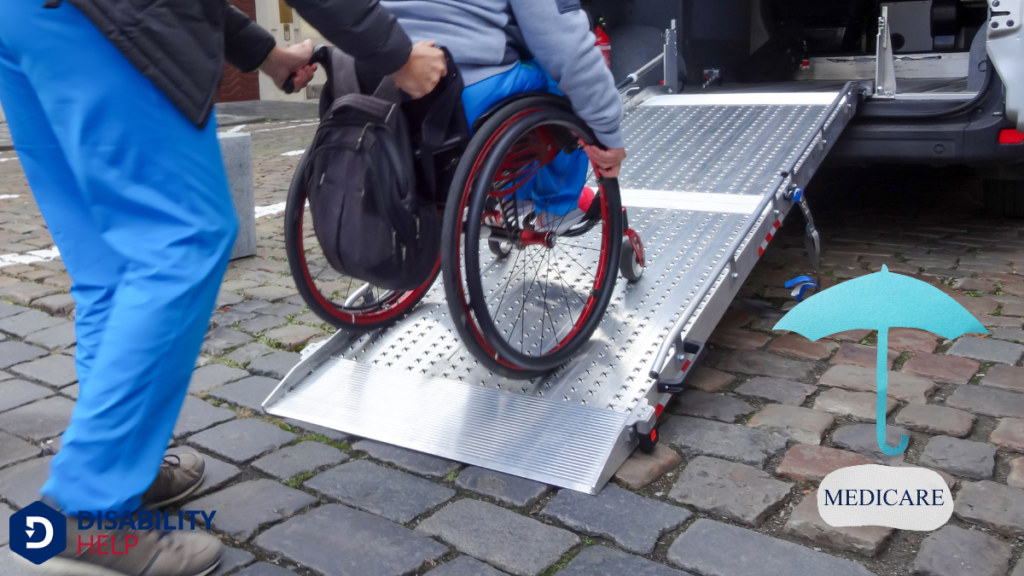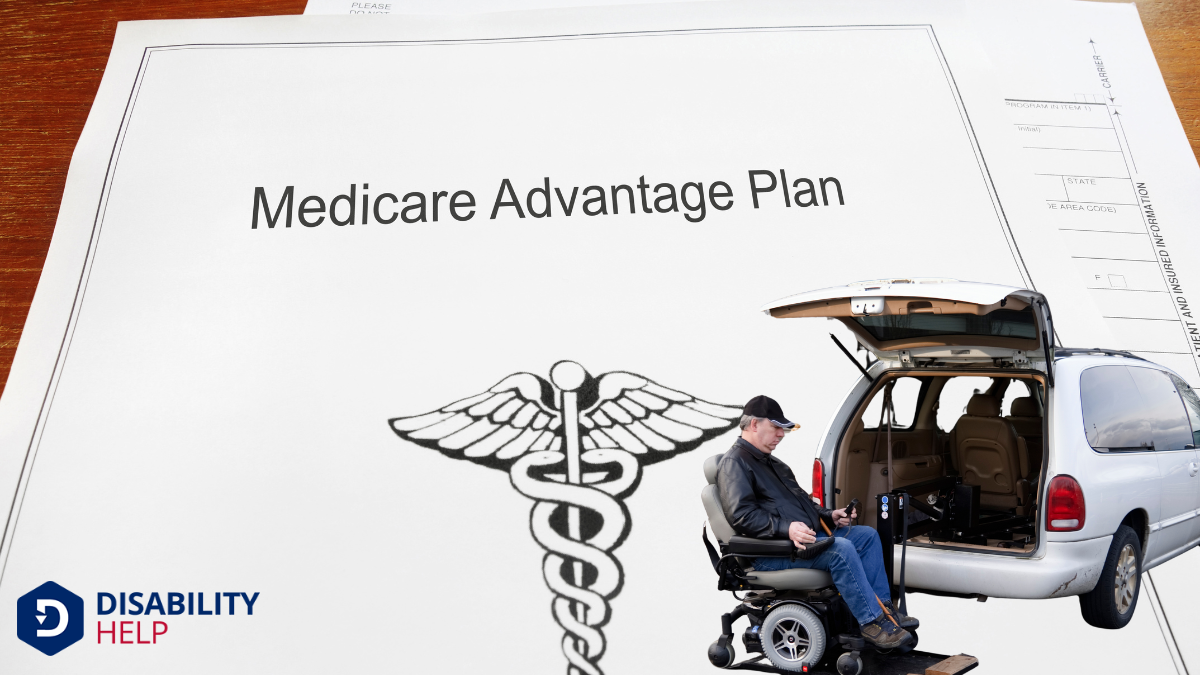When considering whether MedicareA U.S. federal health insurance program for people aged 65 and older, and for some younger people wi... covers the cost of wheelchair lifts for cars, the answer isn't straightforward. Medicare's guidelines for Durable Medical Equipment (DME) often don't extend to vehicle adaptations, as these are typically viewed as non-essential for medical purposes. However, Medicare Advantage Plans might offer some coverage options. So, how do we navigate these complexities and explore potential avenues for assistance? Let's uncover more about what Medicare might offer.
Key Takeaways
- Medicare typically does not cover the cost of wheelchair lifts for cars as vehicle modifications are excluded.
- Medicare Part B may cover medically necessary wheelchair lifts for home use, but not for vehicles.
- Medicare Advantage Plans might offer additional benefits, including some coverage for a wheelchair lift.
- A doctor's prescription and medical necessity are essential for any Medicare-supported mobility equipment.
- Alternative funding options include state programs, non-profits, and private insurance for vehicle wheelchair lifts.
Understanding Medicare Coverage Basics
Traversing Medicare coverage can seem intimidating, but understanding its basics is essential for making informed decisions. We're here to clarify how Medicare works, focusing on its parts and what they cover.
Medicare is divided into Part A, which covers hospital stays, and Part B, which handles outpatient care and necessary medical equipment. Part C, or Medicare Advantage, offers an alternative with bundled services, while Part D covers prescription drugs.
It's important to recognize that Medicare doesn't cover everything, and costs like premiums, deductibles, and coinsurance might apply. Together, we should review the specific services included under each part, ensuring we understand what to expect.
Criteria for Medicare Coverage of Wheelchair Lifts

When considering Medicare coverage for wheelchair lifts, it's vital to understand the specific criteria that must be met. First, Medicare typically covers durable medical equipment (DME) that's deemed medically necessary. This means a doctor must prescribe the lift, stating it's essential for the beneficiary's health.
Moreover, the lift must be primarily used to aid in daily activities, guaranteeing mobility and independence. Additionally, the supplier of the wheelchair lift must be enrolled in Medicare. It's important that we verify our supplier's status to confirm coverage.
While Medicare Part B may cover certain equipment, the lift must fit within the guidelines to qualify. Let's make sure we gather all necessary documentation and physician approvals, as these are fundamental in securing Medicare support.
Types of Wheelchair Lifts Covered by Medicare
Let's explore the types of wheelchair lifts Medicare covers, focusing on manual, electric, and hybrid options.
We'll look at the simplicity and cost-effectiveness of manual lifts, the convenience and advanced features of electric lifts, and the unique benefits that hybrid models offer.
Manual Wheelchair Lift Options
Although maneuvering through the complexities of Medicare can be intimidating, understanding the types of manual wheelchair lifts it covers is crucial for those who rely on them.
Let's explore the options available to us. Manual wheelchair lifts, which are often simpler and more cost-effective, can be a practical choice for many. Medicare typically covers basic manual lift systems that require physical effort to operate.
These might include platform lifts that allow us to roll a wheelchair onto a platform and manually secure it for transport. It's significant to recognize that these manual options are usually more straightforward and don't involve motors or sophisticated technology, making them a favorable choice for some.
Always verify proper documentation and physician recommendations when applying for Medicare coverage.
Electric Wheelchair Lift Benefits
Electric wheelchairA wheelchair powered by an electric motor, often controlled by a joystick, for individuals with limi... lifts offer numerous benefits for those of us who need assistance with mobility. They provide an easy and efficient way to transport our wheelchairs, giving us more freedom and independence.
With just the push of a button, we can effortlessly load and unload our wheelchairs from our vehicles, saving time and reducing physical strain. These lifts are designed to be smooth and reliable, ensuring our safety and comfort during use.
Medicare may cover the cost of electric wheelchair lifts if they're deemed medically necessary, which can ease the financial burden on families.
Understanding this coverage and the benefits of electric lifts helps us make informed decisions about our mobility needs. Let's embrace the convenience and empowermentThe process of gaining control, authority, and power over one’s life, often used in the context of... they offer.
Hybrid Wheelchair Lift Features
While exploring mobility solutions, hybrid wheelchair lifts stand out with their versatility and innovative features.
These lifts combine the best of both interior and exterior lift models, allowing us to transport wheelchairs with ease and convenience. One of the primary advantages is their capability to handle different types of vehicles, making them a flexible option for many users.
These lifts often have user-friendly controls, so we can operate them without complex instructions. Additionally, some models offer remote control features, enhancing convenience.
Hybrid lifts typically support a wide range of wheelchair sizes, accommodating both manual and power wheelchairs.
It's important for us to note that while Medicare may cover some types of wheelchair lifts, coverage specifics can vary. Always check with Medicare for the latest information.
Medicare Part B and Durable Medical Equipment
When we're considering wheelchair lifts and their coverage, it's crucial to understand how Medicare Part B addresses durable medical equipment.
We'll need to guarantee we meet specific eligibility requirements and that the equipment qualifies under Medicare's criteria for coverage.
Medicare Eligibility Requirements
To qualify for Medicare coverage of wheelchair lifts under Part B, it's essential to understand the specific eligibility requirements related to Durable Medical Equipment (DME).
First, we need to verify that we're enrolled in Medicare Part B. Without this, we won't be able to access DME benefits.
Next, a physician must prescribe the equipment, confirming it's medically necessary for our condition. This prescription acts as a cornerstone for eligibility.
The equipment must also meet Medicare's definition of DME, which generally includes items that can withstand repeated use and serve a medical purpose.
Finally, it's important that the supplier we choose is enrolled in Medicare. This guarantees the equipment is covered and helps us avoid unexpected costs.
Covered Equipment Criteria
Understanding Medicare's eligibility requirements sets the stage for exploring the criteria for covered equipment under Part B.
Let's examine what Medicare considers when approving durable medical equipment (DME). To qualify, equipment must be deemed medically necessary and prescribed by a healthcare provider. It should primarily serve a medical purpose, be suitable for home use, and be expected to last at least three years.
However, it's important to know that Medicare Part B doesn't cover all types of equipment. For example, wheelchair lifts for cars typically fall outside the covered scope because they're considered vehicle modifications, not standard DME.
We must focus on what's essential and prescribed, ensuring that our expectations align with Medicare's guidelines to make informed decisions about our healthcare needs.
The Role of Medicare Advantage Plans

While traditional Medicare offers vital healthcare coverage, Medicare Advantage Plans can play an important role in providing additional benefits, such as wheelchair lifts. These plans, offered by private companies approved by Medicare, often include extra services that aren't covered under Original Medicare.
We should explore these plans because they may offer more extensive support for mobility needs.
Medicare Advantage Plans typically bundle Medicare Part A, Part B, and sometimes Part D, providing a wide range of services under one umbrella. Some plans may cover the cost of wheelchair lifts for cars, which can be a critical benefit for those with mobility challenges.
It's important to review each plan's specific offerings and network restrictions, as coverage can vary greatly between plans and providers.
Potential Out-of-Pocket Expenses
As we explore potential out-of-pocket expenses for wheelchair lifts, it's important to reflect on how Medicare's eligibility criteria impact our costs.
If Medicare doesn't fully cover the lift, we'll need to think about alternative funding options.
Together, let's figure out the best way to manage these expenses.
Eligibility Criteria Impact
Maneuvering the eligibility criteria for Medicare coverage of wheelchair lifts can be both vital and complex, potentially impacting out-of-pocket expenses.
We need to understand that Medicare typically covers durable medical equipment when deemed medically necessary. However, wheelchair lifts for cars often fall into a gray area. Our eligibility hinges on specific requirements and documentation, such as a doctor's prescription and a clear demonstration of medical necessity.
When these criteria aren't met, we might face significant out-of-pocket costs. It's important to thoroughly discuss our situation with a healthcare provider and Medicare representative, ensuring all necessary paperwork is submitted.
Alternative Funding Options
How do we handle the financial burden when Medicare doesn't cover wheelchair lifts?
First, let's explore alternative funding options. We might consider reaching out to local non-profits or charities that assist with mobility equipment costs. They often have grants or assistance programs.
Additionally, state programs sometimes offer financial help or loans specifically for accessibilityThe design of products, devices, services, or environments to be usable by people with disabilities.... equipment. It's also a good idea to check if our private insurance policy includes any benefits for mobility aidsDevices designed to help individuals move around more easily, such as canes, walkers, or wheelchairs....
Crowdfunding platforms like GoFundMe can be another option. By sharing our story, we might receive community support.
Finally, some manufacturers offer financing plans, spreading the cost over time and reducing the immediate financial impact.
Together, we can find a solution that eases the financial burden of purchasing a wheelchair lift.
Navigating the Medicare Appeals Process
While dealing with Medicare can sometimes feel overwhelming, understanding the appeals process for wheelchair lifts is essential if your claim is denied.
First, we need to closely review the denial notice. It'll outline why Medicare denied the claim, which helps us prepare our appeal. We should gather supporting documents, such as medical records and letters from healthcare providers, that justify the necessity of the wheelchair lift.
Next, we'll draft a clear appeal letter stating why we believe the decision should be reconsidered. It's important to submit this appeal within 120 days of receiving the denial.
Once submitted, we'll await Medicare's decision, which usually arrives within 60 days. Let's stay organized and proactive to enhance our chances of success.
Exploring Alternative Funding Sources

After we've submitted our appeal, it's wise to contemplate other ways to fund a wheelchair lift in case our efforts with Medicare don't pan out.
Let's explore some alternative funding sources that might ease our financial burden. Various organizations and programs offer assistance; we just need to know where to look.
- State Assistance Programs: Some states have funds earmarked for accessibility equipment.
- Nonprofit Organizations: Groups like the United Spinal AssociationA U.S. nonprofit organization that provides support and advocacy for people living with spinal cord ... offer financial help.
- Veterans' Benefits: If we're veterans, the VA might provide support for mobility aids.
- Crowdfunding Platforms: Websites like GoFundMe can help rally our community's support.
Importance of Medical Documentation
Securing thorough medical documentation plays an essential role in successfully maneuvering the Medicare process for acquiring a wheelchair lift.
We need to guarantee our medical records accurately reflect the necessity of a wheelchair lift for daily life activities. Our doctors should detail our mobility limitations and how a lift would greatly improve our quality of life. This documentation serves as a critical piece of evidence when Medicare evaluates our claim.
It's important that we work closely with our healthcare providers to gather extensive and precise records. This not only strengthens our case but also minimizes the chances of facing delays or denials.
Steps to Acquire a Wheelchair Lift Through Medicare
To start the process of acquiring a wheelchair lift through Medicare, we should first consult with our healthcare provider to confirm eligibility and gather necessary documentation.
Once we've a prescription and supporting medical records, it's time to understand the specific steps involved. Here's a simple guide to help us navigate this process:
- Research Suppliers: Identify Medicare-approved suppliers who offer the wheelchair lift we need.
- Contact Medicare: Verify that the lift is covered under our specific plan and what our costs might be.
- Submit Documentation: Provide all required paperwork to the supplier, including the prescription and any additional Medicare forms.
- Approval and Installation: Once approved, arrange for the installation with the supplier and guarantee it meets all safety standards.
Conclusion
In summary, while traditional Medicare typically doesn't cover wheelchair lifts for cars due to their non-essential status, it's vital for us to explore all available options. Medicare Advantage Plans might offer some benefits, so let's check our specific plan details. We should also consider alternative funding sources and guarantee we have thorough medical documentation. By staying informed and proactive, we can make the best decisions for our mobility needs. Let's take the necessary steps together to achieve this.






